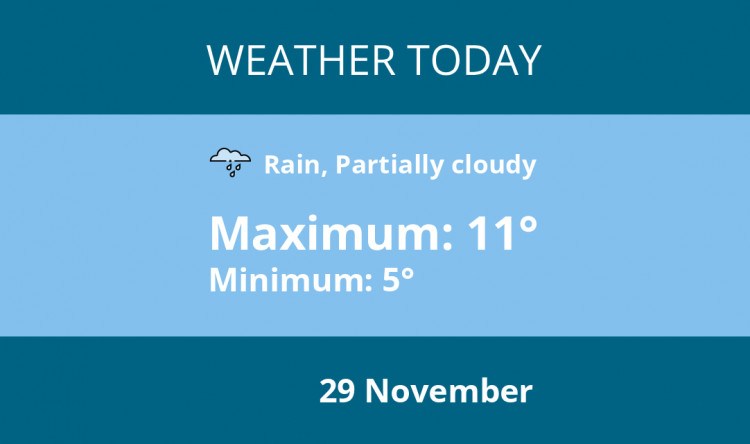How do Wells, Street, Glastonbury, Shepton and Frome really stack up? New data shows the truth about life in Somerset
By Laura Linham 15th Jun 2025
By Laura Linham 15th Jun 2025

Life in Somerset might feel like a mixed bag – and now the data proves it.
The latest deep dive by the Office for National Statistics has laid bare how our corner of the South West is faring on everything from jobs and health to school attendance and Wi-Fi – and it paints a picture that will feel pretty familiar to anyone living in Wells, Street, Glastonbury, Shepton Mallet or Frome.
Most of the numbers show Somerset sitting bang on the national average. But dig a little deeper and there are a few worrying signs – not least when it comes to the number of kids regularly missing school and the county's patchy internet connection.
Let's start with the money.
Pay and work: 'Could be better'
The average full-time income in Somerset is £21,359 – nearly a grand lower than the national local authority average of £22,231. For people in Street and Shepton, that won't come as much of a surprise. The area's strong manufacturing base and seasonal jobs often mean wages sit below the national median.
And although the employment rate is solid – with just 3.2% out of work, close to the UK average – people here are producing more for less. Productivity per hour worked is above average (£36.10 in Somerset compared to £33.20 nationally), which raises the familiar question: where's the pay rise?
Business numbers are up, though. The county saw more than 5,600 businesses operating in 2023 – higher than the national average when scaled – showing resilience and growth in towns like Frome and Wells, where small independents are increasingly plugging gaps left by larger chains.
School attendance: The figures aren't pretty
While early years education is strong – with 80.3% of children meeting development goals – once they get to school age, things get more complicated.
A staggering 34.4% of pupils in Somerset are classed as persistently absent, well above the national average of 21.7%. That means more than one in three school-aged children missed at least 10% of sessions during the year.
And when it comes to disadvantaged pupils, the picture gets worse – with 21% of them consistently absent compared to 13% nationally.
What's causing the issue? That's not covered in the stats – but anyone who's spoken to parents or teachers locally will know there's a toxic mix of post-Covid anxiety, SEND needs, stretched support services and kids simply falling through the cracks.
On the plus side, Somerset is seeing a boom in apprenticeships – with 492 new starters in 2023-24, well above average. It's a rare bit of good news in the education section and shows that hands-on routes into work are still valued here.
Health: average all round, with a few red flags
When it comes to our health, Somerset again sits around the national average. Life expectancy in good health is just over 60 years, and most measures of long-term illness and wellbeing are steady.
But 13.8% of residents report experiencing mental health difficulties – slightly above the national average – and just under a quarter are classed as obese. Both of those figures are creeping up compared to previous years.
Healthy eating and physical activity levels are slightly better than average, though, so it's not all doom and gloom.
Connectivity: Broadband blues
Here's where things get frustrating. Despite big government promises, Somerset is still dragging its feet on digital connectivity.
Only 79.1% of properties have access to ultrafast broadband – compared to a national figure of 95.6%. And 14.5% of homes are still relying on speeds below the superfast threshold.
It's a problem that hits rural homes hardest – but even parts of Wells, Glastonbury and Frome have not been spared the buffering wheel.
Mobile coverage is also behind the curve, although some gains have been made in recent years thanks to local mast upgrades.
Environment and access
Somerset performs reasonably well on access to services. Around 74% of households are within a reasonable distance of schools, GPs and other amenities – not far off the national average.
Frome and Wells fare better than Shepton or Glastonbury in this area, with a higher concentration of services and better transport links. But public transport access remains an issue, particularly for residents on the outskirts or in smaller villages.
So how does Somerset really compare?
According to the ONS, Somerset sits in a statistical cluster of places with strong employment, good life expectancy and relatively low poverty rates. But the cracks are visible – especially around income, school attendance and digital access.
CHECK OUT OUR Jobs Section HERE!
Shepton Mallet vacancies updated hourly!
Click here to see more: Shepton Mallet jobs
Share:









